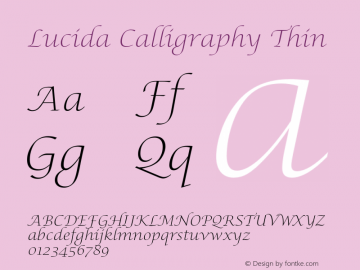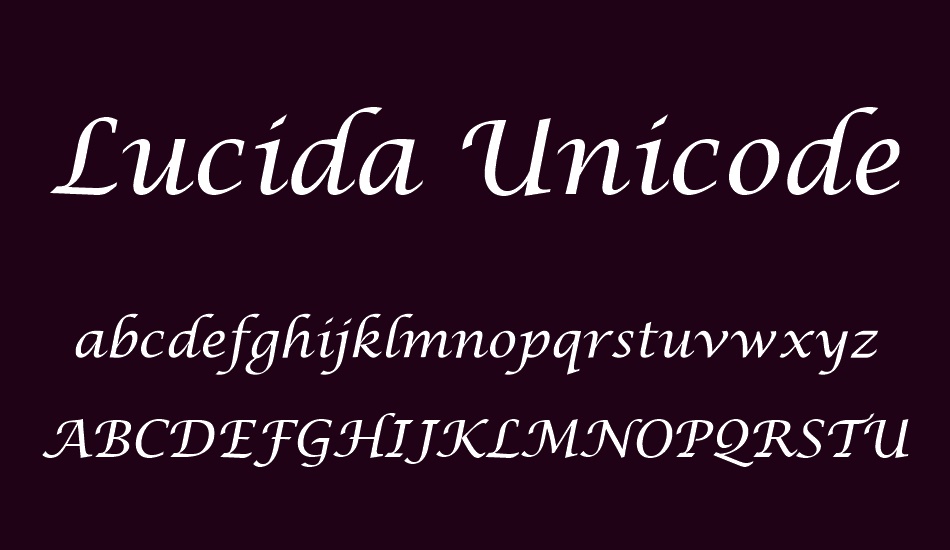

(5)ĭespite the attractions of 15th and 16th century Humanist writing, we were designing a typeface for millions of computer users at the end of the 20th century, so we based the proportions of our design on how modern readers read on screens (circa 1995).ĭesktop computer screens were usually viewed at a greater distance than text on paper (we estimated 25% to 50% greater, based on ergonomic guidelines). Hence, the relatively small size and italic style of the Aldus-Griffo font seem not to have been impediments to reading or book buying.Ī 1998 study of reading speed and comprehension of roman versus italic (actually, slanted roman) on computer screen, found no significant difference between reading speed and comprehension, although users preferred the roman version. Aldus’ pocket books were composed entirely in his small italic, and were were so popular that they were soon widely imitated and the type style plagiarized by rival printers in other countries. Aldus’ italic type size was roughly 11 point, whereas the roman types Aldus had used until then were roughly 16 point. We can’t go back to the 15th century to test reading of italic (though fascinating it would be), but in favor of italic is that in 1501, Venetian printer Aldus Manutius printed the first book in italic type, cut by Francisco Griffo. The transformation was not accomplished all at once, but by a process of progressive modification and refinement over time (following Twain’s dictum about giving a round man time to change his shape). So, we transformed Lucida Casual Italic from a light, sprightly alphabet into a heavyweight contender we called “Lucida Big Casual”.
#Love death 4 setup free
We began by experimenting with Lucida Casual Italic, which had the free spirit we wanted and a big x-height (same as Lucida Grande), but it did not have the bigger x-height, greater boldness, and narrower width needed for a system font in the Chicago class. On the low resolution computer monitors of the 1990s, a font needed a big x-height to be easily readable at screen reading distances that were 25% to 50% greater than for reading on paper.


#Love death 4 setup how to
We were puzzled about how to fit a loose, playful design into a procrustean metric bed, but then we thought of Mark Twain’s remark that, “A round man cannot be expected to fit in a square hole right away. It needed to look as big as Chicago and had to conform closely to the average width of Chicago, so that substituting the new font in the system would not cause line length overflows in menus, messages and texts.

We felt certain that a casual italic could have the desired playful look, but a problem was that the font had to be “cabined, cribbed, confined,” as Shakespeare’s Macbeth complained about his plight. The new font was to be part of one of the themes.
#Love death 4 setup pro
Top Search Queries On DFF Axiforma ChineseRocksRg- DIN Pro Born Ready All Round Gothic W01 Book Abu Dhabi groovy AURA Proxima Nova acumin pro regular Carlo Melow Sans Revans BAGISKO Revans Normal Montserrat Zfont Circular Std- SF Pro Text Arlon Chunk Five Panda Hagrid Text Trial bold roxborough-cf-light WebFont Lulo Clean W01 One peaches and cream Avenir LTStd-Book Agrozza Demo Aloja Extended Noyh Geometric Slim- Recoleta Semi Protrakt Anemouth Personal Use Only Leiko- Gotham- Gilroy-Semi American Typewriter Sombra ergonomique-bold-webfont Artful Beauty Bilal SF Pro Display SF Pro Text Semibold Isabel Contax Hipster Script W00 Centauri Tomkin- Controwell-Side Controwell- Crystal vanguard-cf-heavy-webfont The Barista college sixties Aston Script Pro Mak- Channel Slanted 1 Sans Serif Shaded Bringlandes Proxima Nova bold Quiche Sans Operator Mono Faktum ACaslon Pro- Gilroy- Radiantly Signature Moon Time Origin Tech Demo ogg Perpetua ergonomique-black-webfont SCRIPT Uni Sans Semi Steel Modster Script Evolitta TT Commons pancake Apple SD Gothic Neo URW DIN Arabic Verbatim 29LTBukra- Alliance No.We began work on the fun-loving new font when Apple’s “Copland” operating system was being developed to include an “Appearance Manager” that let users switch between different graphic themes in the user interface, changing system fonts, graphics, and effects.


 0 kommentar(er)
0 kommentar(er)
